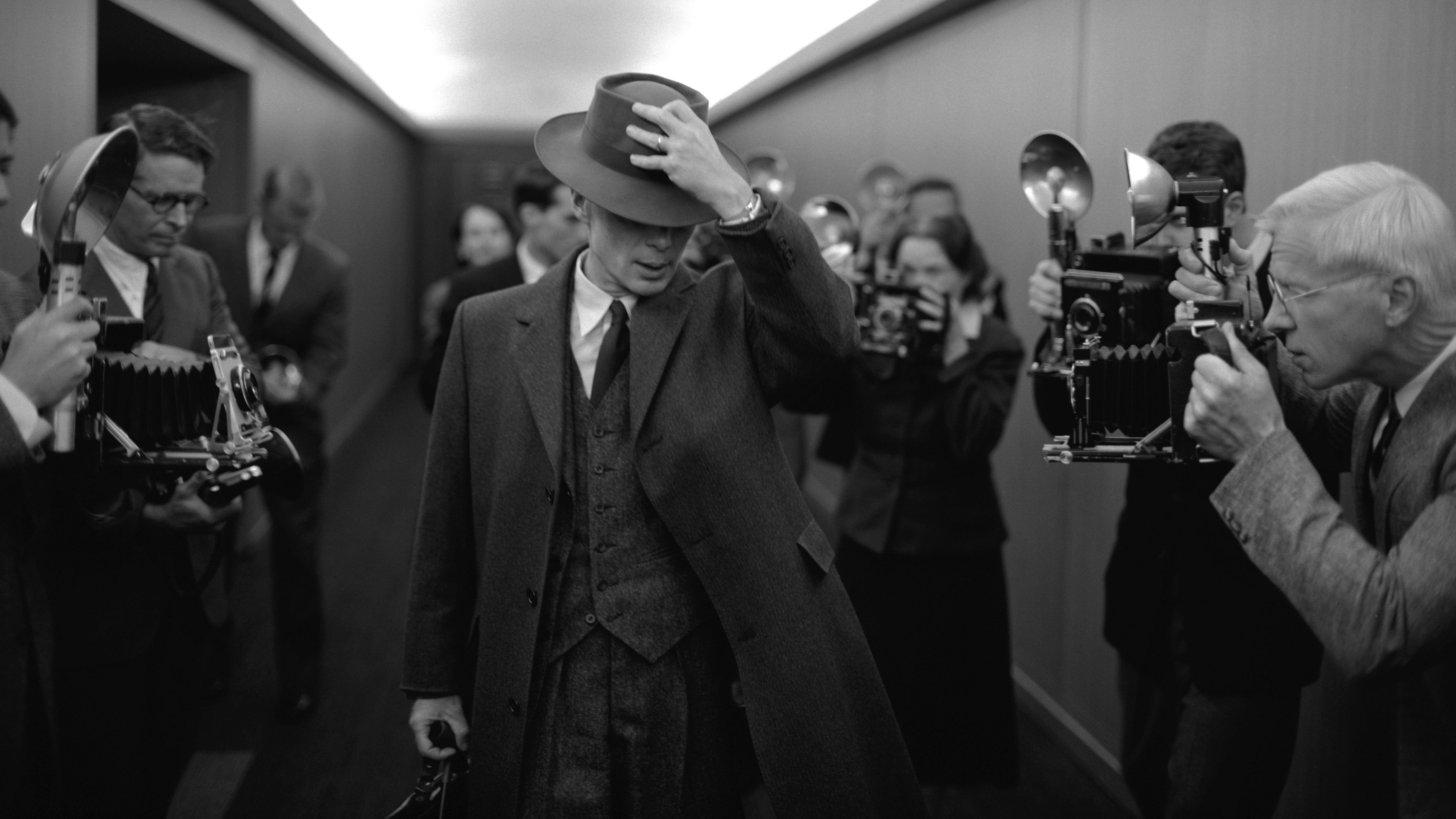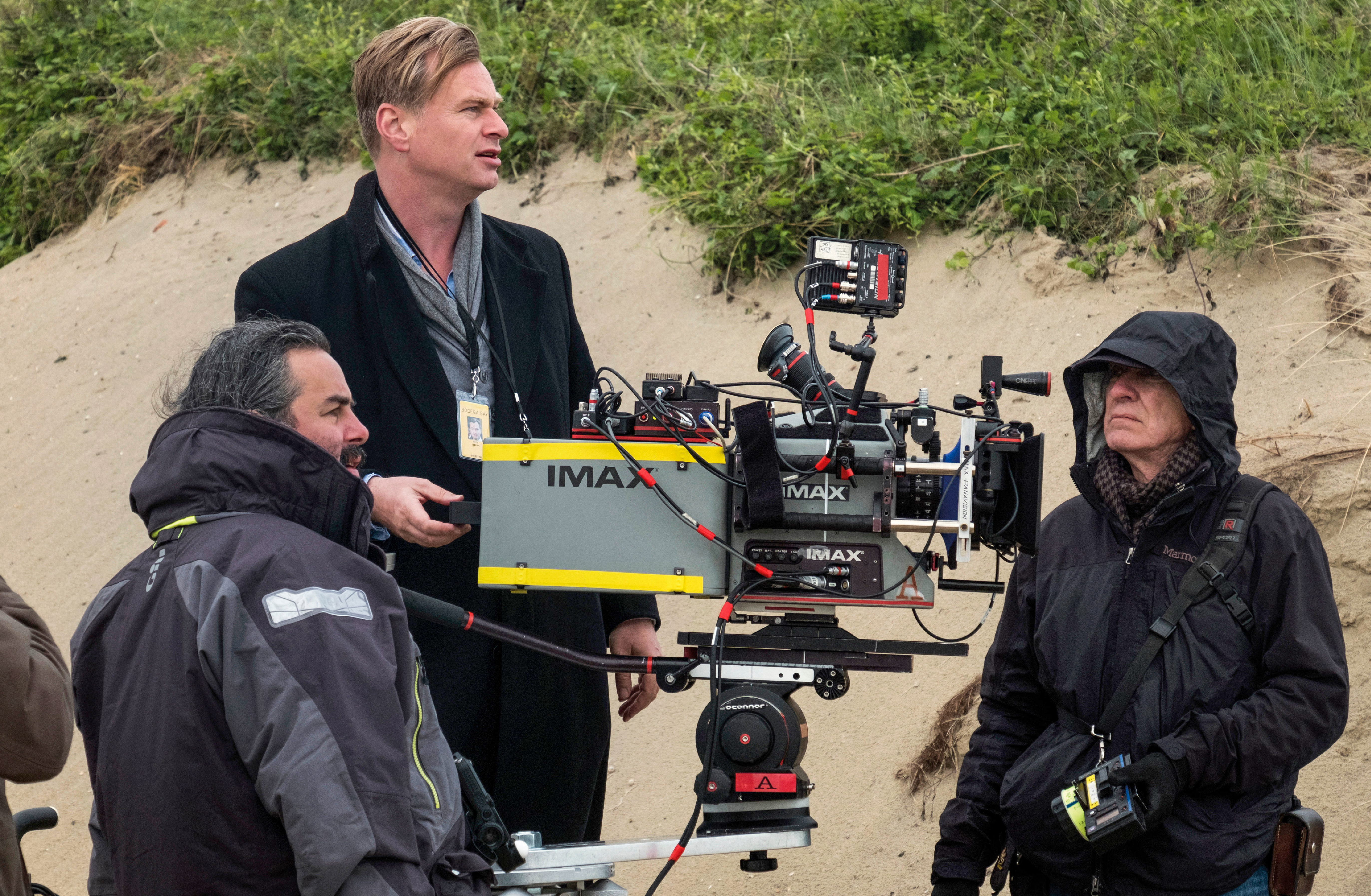
Friday 21 July is a big day for cinema with the release of two highly anticipated but entirely different films; Greta Grwig’s Barbie featuring Margot Robbie and Ryan Gosling and, Christopher Nolan’s Oppenheimer with Cillian Murphy and Florence Pugh. Barbie may well be touted as the box office favorite – with projections to take roughly $110 million on its opening weekend (double what Oppenheimer is expecting). As camera enthusiasts, however, we can’t help but think the latter is a little more interesting.
There are some key differences between Barbie and Oppenheimer other than the obvious (one is about plastic dolls and the other is about the development of nuclear weapons). While Barbie has been created in the standard 1.85:1 widescreen ratio making it perfect for almost every cinema screen in the world, Oppenheimer has been shot entirely on large format film and requires an Imax screen with a 1.43:1 aspect ratio if it is to be viewed as Nolan intended.
• Check out the best cinema cameras – our pick of the top digital cameras for independent filmmakers

For real film buffs, watching Oppenheimer in a 70mm Imax theatre is a must. Nolan told The Associated Press it would give viewers: "The best possible experience” but sadly, not all movie theatres are equipped with the correct screens. We’ve all heard about Imax cinemas and it’s common knowledge they’re meant to offer a better viewing experience than standard cinemas but what makes them so good and why is it so important to watch Oppenheimer in one?
Oppenheimer was shot entirely on Imax 65mm and Panavision 65mm film using some of the highest-resolution film cameras known to man. (This is unusual; typically Imax cameras are used for big action shots and more convenient cameras for other shots.) Not only does this mean the film will be super sharp and deliver incredible depth, it also means the entire screen will be filled allowing the viewer to be fully immersed in the movie.
Imax, the company name, stands for Image Maximum and it offers the highest resolution available. To experience Imax properly it needs to be viewed on a special Imax screen which is significantly larger than a standard screen. The projectors themselves are much higher resolution and the theatres are specifically designed in a way that immerses you in the sound and visuals for “hyper life-like dimensionality.”
Imax cameras themselves are incredibly expensive, tricky to use, and very loud so can’t really be used when shooting scenes with lots of dialogue. They can only shoot about three minutes of film at once so it needs to be switched out regularly which is why not many films are shot entirely on Imax – it wouldn’t be time or cost-effective.
Imax 65mm from the cameras is transferred onto 70mm film for projection in an Imax 70mm cinema. The 15-perforation Imax 65mm fills the whole 1.43:1 screen, while the scenes shot on 5-perforation are a more cinematic 2.2:1 widescreen don't use the whole height. In other locations, the 15-perforation shots will likely be cropped at the top and bottom to fit the wider screens.
Not all Imax theatres are Imax 70mm theatres. Many use digital projection for a start. Each 70mm Imax frame is 8.3x bigger than 35mm. The film runs through the camera and projector horizontally, so the frames use 15 perforations of the film, making them 3.4x bigger than even 'standard' 70mm film. That provides the resolution to project on a screen 4 London busses tall!
Depending on where you live, you may have to make a dedicated journey to get the full Imax 70mm experience as just 19 theatres in the US, three in the UK, six in Canada, just one in Australia (Melbourne), and one in Europe (Prague).
If you’re not lucky enough to live close to one of these locations, you’re local movie theatre will still be showing it, but unfortunately, you won’t get to enjoy the full impact of the film, though there are other premium options available. Either way, we’re still excited to see it and at three hours long, it’s definitely value for money!
- Pixar created a virtual IMAX camera and lenses to shoot Lightyear
- Christopher Nolan's $1,500,000 debt to IMAX, and counting!
- 40 years since an IMAX camera first filmed in space
- This photographer adapted a massive IMAX lens to a Canon EOS R ...
- Guardians of the Galaxy 3 was released in 600 aspect ratios!







